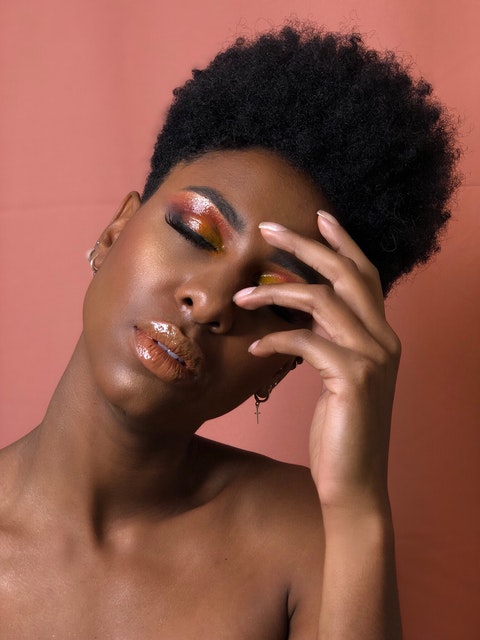Today’s market for beauty brands is lucrative, to say the least. There are hundreds of options, with a wide variety of price ranges and brand promises. How do we know if we are choosing the correct one for each of our individual needs?
Marketing efforts and campaigns can be the decisive factor between an increase in sales, or a fallout altogether. As companies need to find the right balance between delivering entertaining campaigns to engage with their audience while also providing regulatory information. The question begs, can small beauty brands compete with top leaders in the cosmetic and personal care industry? And if so, how are they doing it?
It’s no secret that social media impacts consumers’ decisions, it’s the first place consumers visit to interact with brands and read reviews. But despite that impact, 70% of millennials’ purchasing decisions are influenced more by their peers than any other outlet. The focus of brands within the last year has also shifted, now honing in on inclusivity based on age, gender, ethnicity, and socioeconomic status - leaving us all with the responsibility of making informed consumer decisions.
.png)
The following 3 beauty brands have created engaging marketing campaigns that made them stand out and catch consumer’s attention in 2021:
Glossier – Aesthetics and social media
Glossier understands the concept of being an “influencer” and makes every one of its consumers a brand ambassador. They create their products based on suggestions and requests from their consumers. Talk about made-to-order skincare!
With all Glossier’s consumers seen by the brand as “micro-influencers”, packaging design is at the top of their list – whether is the size of their famous reusable pink pouches or the boxes products come in. Glossier must activate its existing packaging options and offer consumers an easy way to interact directly with the brand to share their experiences. By adding a QR code on their boxes or pink pouches, it will allow consumers to instantly access Glossier’s social media sites, read product information, watch tutorial videos, submit product reviews, and more.
L’Oreal – The use of AR
L’Oreal is already a well-known affordable cosmetics brand, but to maintain that status and stay ahead of the competition it acquired ModiFace in 2018. ModiFace is a top leader in augmented reality – making the acquisition a game-changer in the beauty industry. L’Oreal now can provide an immersive experience for consumers to test products before purchasing, making their products more accessible to consumers online.
By providing consumers a personalized online shopping experience during the COVID-19 pandemic period, L’Oreal boosted their overall sales by 8%. Proving to other brands that experience is everything when it comes to interacting with consumers. But this technology doesn’t need to stay in the world wide web only, L’Oreal can introduce the same AR experience in-store. By adding a QR code on in-store displays or their package, it can allow consumers to try their products in-store without having to touch any surfaces. How amazing would it be to try different shades of lipstick without wasting or touching any products?
The Honest Company - Focused on minimal ingredients for healthy skincare
Now that we spend more time at home than we ever anticipated, the concept of “self-care” has exponentially grown to combat the effects of quarantine and stress. Jessica Alba’s Honest Co. provides consumers with affordable, natural, and nourishing products for adults and babies, without the price tag of designer skincare lines. Making “self-care” not selfish and affordable to all.
The number of brands switching gears to provide more sustainable and natural products is increasing by the day. As consumers become more interested in the ingredients on the products they consume – they demand transparency from brands. It’s a global movement. Consumers around the world want engaging and informative content throughout the shopper journey. The main challenge we see brands face is inclusivity all around the globe. But the solution is simple, a language QR code. These specific QR codes detect the language on consumers’ devices and can deliver any message based on consumers’ preferred language. You can add them to TV spots, in-store display ads, packaging, labels, print materials, and even electronic displays.

The use of QR codes for mobile engagement is no longer a technical battle, but a creative one. As technology and mobile phones keep advancing companies need to find new ways to spark consumer interest and keep their attention on their products and vision. Using QR codes on in-store displays, packaging, TV ads, and labels (to name a few) has never been easier, it’s a win-win for consumers and brands alike. It allows consumers to experience brands on a different level and on their terms, and it provides brands with real-time data collection.
Smart packaging is no longer an option for companies, it’s a must. Not sure how to get started? Schedule a meeting at info@scanbuy.com to learn how Scanbuy has helped companies design end-to-end consumer engagement solutions that activate their packaging, engage their consumers while delivering regulatory information to millions of consumers all around the globe.
Neutronian Announces That Scanbuy Has Earned Its Data Quality Certification